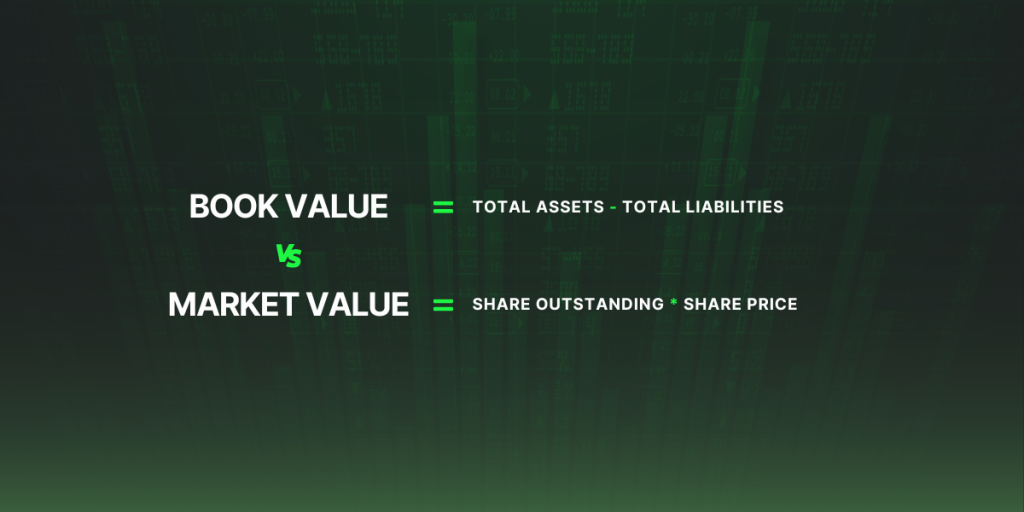Introduction
Investing in the stock market can be an excellent way to grow your wealth. However, it can also be incredibly confusing, especially if you need help understanding the jargon and terminology. One term thrown around a lot in stocks is “share price.” But what exactly does it mean, and how does it affect your investment strategy? In this article, we will explore share price and two important metrics used to assess the value of a stock: book value and market value. Knowing these metrics is vital to making informed investment choices.
Understanding Share Price

The share price of a stock is simply the price the stock is trading at on any given trading day. Price movements reflect trader sentiment about the stock and the broader politico-economic conditions influencing investor confidence.
In contrast, the share price is the centrepiece of technical analysis, often considered in the context of one or more fundamental indicators. For instance, a company’s book value (dollars per share) is the business’s value according to its published financial statements. There would be a cash balance if investors sold the company’s assets and paid its liabilities. That balance is the book value of the company.
Understanding Book Value (per share)
Book value, also known as net worth, is the shareholder equity amount reported on a company’s balance sheet. Companies with significant ownership of tangible assets such as property, buildings and physical inventory tend to have larger book values.
Here we are talking about tangible (physical) assets, such as buildings and plant or equipment, vs. intangible assets, such as goodwill, patents and accounts receivable. Conversely, companies with fewer tangible assets, such as consulting and software coding or fashion design companies, will have lower book values.
Please note that book value is typically reported quarterly, which means it may only sometimes be up to date. It’s essential to remember that the book value could have changed by the time an investor decides to trade a stock.
Also, book value is open to interpretation and adjustment in accounting. Furthermore, book value requires multiple years of financial statements to understand a company’s value clearly. The bottom line is that fundamental analysis requires an investor to look carefully at each indicator and understand what the number is saying.

Understanding Market Value
A company’s market value, also known as market capitalisation, can change daily due to fluctuations in its stock price. This value is determined by multiplying the share price by the number of outstanding shares and represents the company’s current worth. It is important to note that market and book values can differ significantly depending on factors such as the company’s assets and liabilities, industry, and accounting practices. If a stock price moves 1, 2, 3 or more percent in one day, the market value of a company will vary accordingly. When these short-term movements happen, stocks are said to be overbought or oversold. When markets surge unrealistically or crash suddenly, market values move dramatically but don’t necessarily reflect an accurate picture of the company’s value.
Investors who follow a value-based trading strategy may search for companies with a lower market value than their book value. Such companies are considered undervalued, and these traders anticipate a surge in the stock’s popularity that will drive its price. At the same time, profitable companies tend to have market values above book values. Also, profitable companies typically occupy the higher or ‘blue chip’ indexes.
Conclusion:
The main takeaway is that market sentiment can drive market values high and then deflate them in a short period without the company’s book value changing much at all. Therefore, it is essential to consider whether a company is trading high due to its intrinsic value or is riding a period of high market sentiment.
Please bear in mind that relying solely on metrics may not provide a comprehensive overview of a company’s overall performance.



